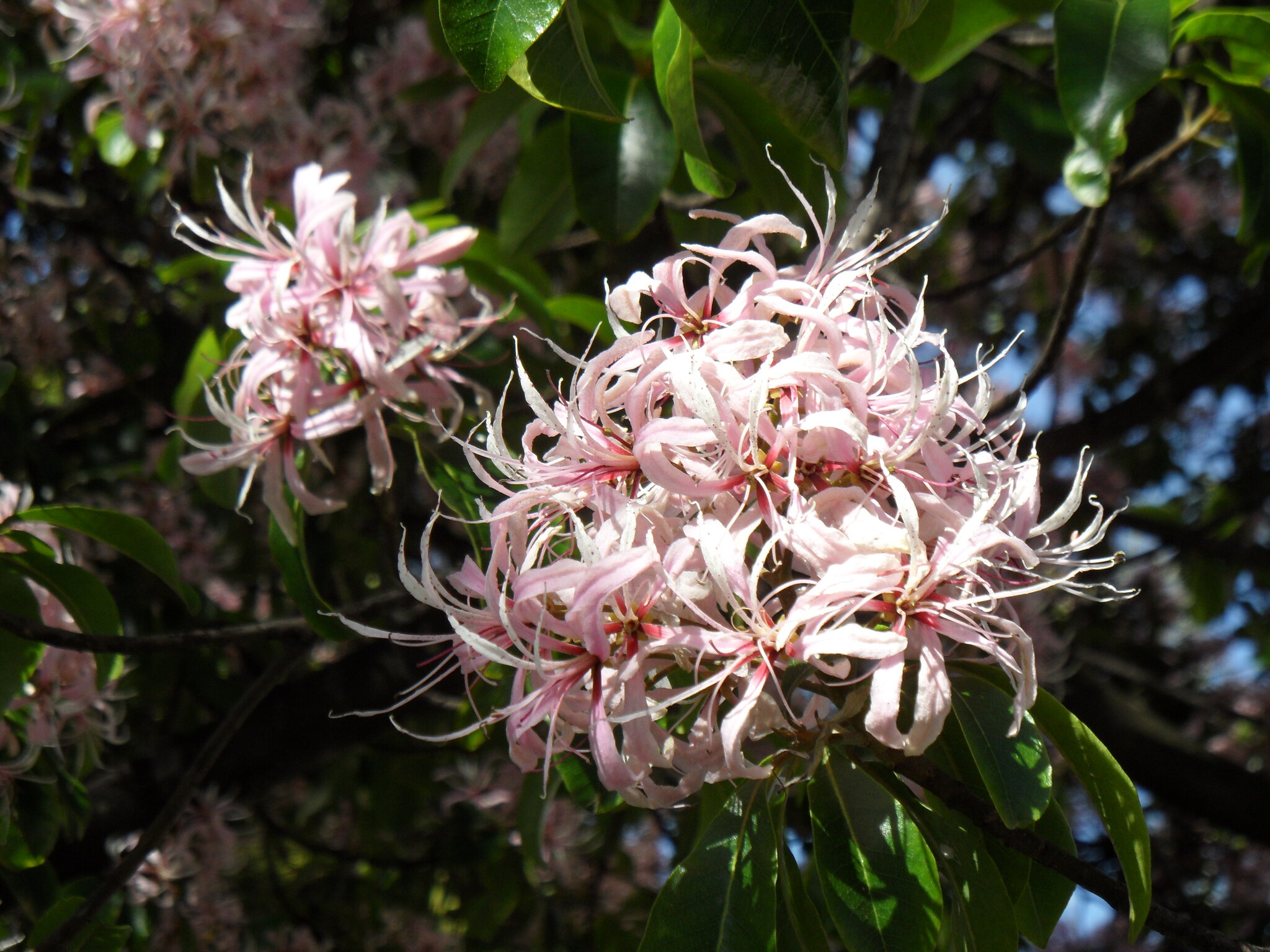
Greek kalos — beautiful, dendron — tree.
Evergreen trees. Leaves simple, opposite or whorled, gland-dotted. Flowers in large terminal clusters, white to pinkish. Calyx 5-parted. Petals 5. Fertile stamens 5, sterile stamens 5, petal-like. Ovary with 5 lobes, stalked. Fruit a 5-valved, woody, warted capsule.
The genus name is sometimes spelled Calodendron.
Grown for the dense green canopy of foliage and extremely attractive and prolific orchid-like flowers.
Softwood cuttings.
Source of timber; seed of C. capense is the source of oils used in soaps.
Leaves with prominent parallel lateral veins; tree with narrow-petalled, orchid-like pink and white flowers; fruit surface covered with pointed knobs.
1 species from E Africa, extending to the Cape.
Source: (2002). Rutaceae. In: . Horticultural Flora of South-eastern Australia. Volume 4. Flowering plants. Dicotyledons. Part 3. The identification of garden and cultivated plants. University of New South Wales Press.
